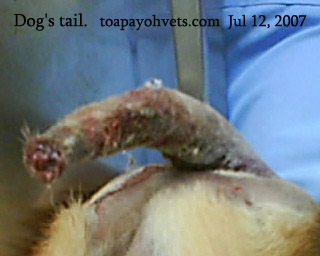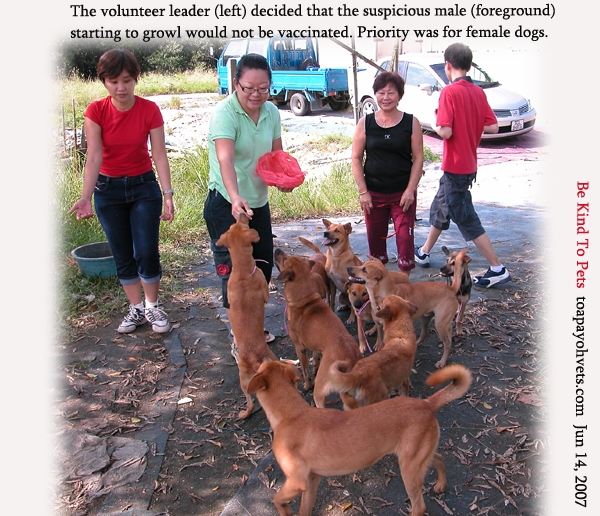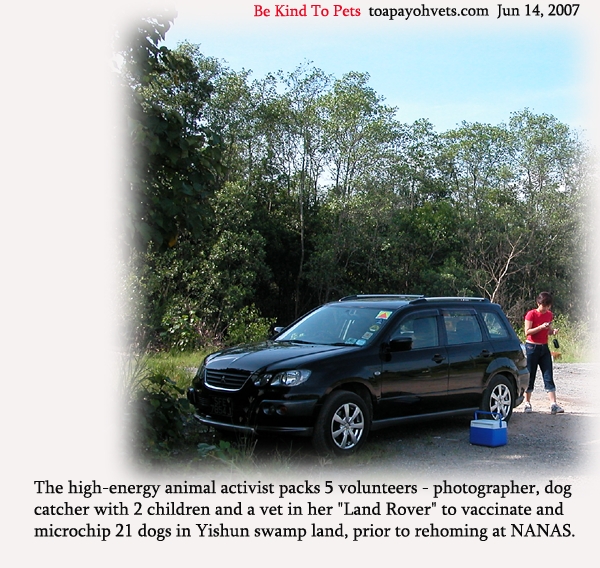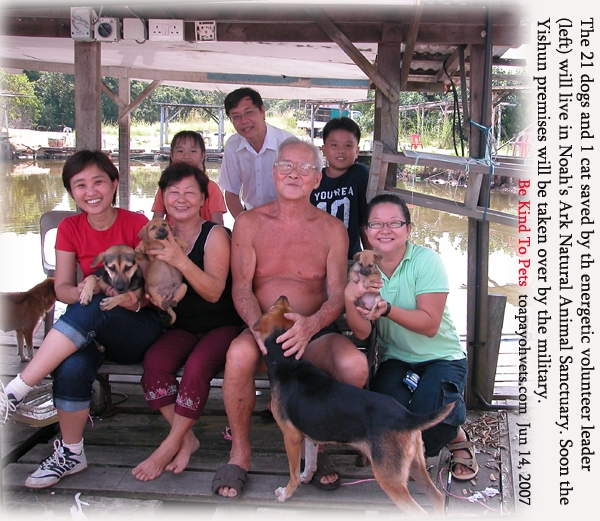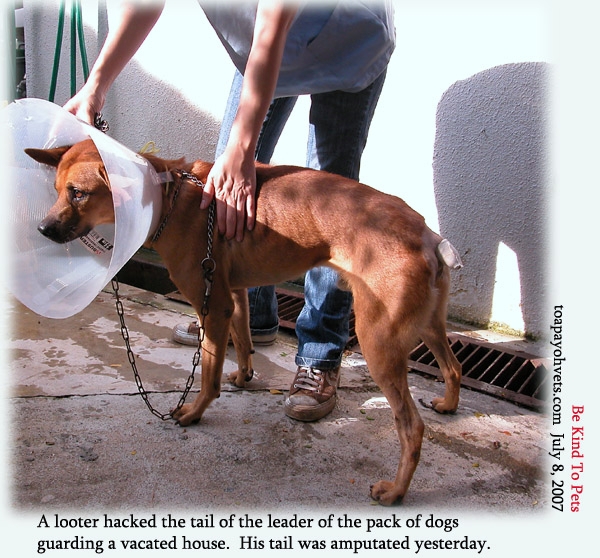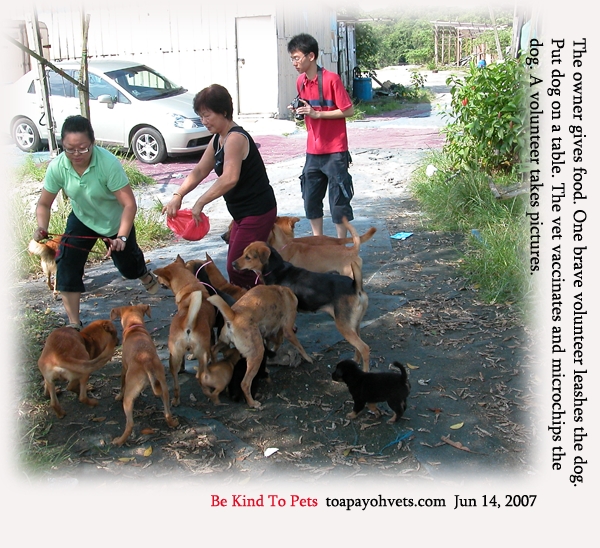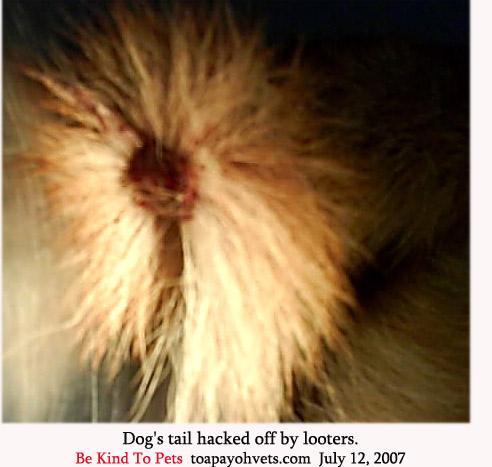The 10-year-old girl suddenly asked me a question that blew my brains off: "If a cockroach has been stepped on, what is your consultation fee and treatment?"
I would expect nobody would ask a veterinarian such a question about cockroaches. I I replied: "My fee depends on how long what type of treatment is required and how long it takes to treat it." I needed to consult my professors as cockroach was never discussed during my lectures some 30 years ago and I had not come across a veterinary treatment of cockroaches book.
I wanted to meet Janet after her aunt told me that she loved writing and had won writing prizes. I wanted to know what stories primary school children read nowadays besides horror and suspense.
I rarely had an opportunity to meet child-writers. I would say most Singaporean children cannot write English very well since they seldom read widely. So, a prize-winning child writer of an old doggy client was a rare personality to meet.
Now we were having a late lunch at the Crystal Jade Restaurant in Toa Payoh at 1.30 p.m. although the father and daughter came to my surgery at 12 noon as agreed. There was a very unhappy puppy owner who wanted to raise hell for a puppy seller who had sold him a puppy illegally. He alleged that the government's veterinary A.V.A's website required 2 vaccinations before sale and micro-chipping after July 1, 2007 were implemented.
This person took up a lot of my time as I tried to help the puppy seller to resolve the problems of not giving him a receipt for sale of the puppy and no vaccination certificate. And no micro-chipping too as mandatory after July 1, 2007. His puppy ears were itchy with big scales on the ear flap and said that the seller used "Revolution" once instead of 3 times. He would complain to the authorities so that the the puppy sellers' certificate given by the AVA would be downgraded from whatever grade to a lower grade!
"Well," I advised him "You have to resolve your issues with the seller after I had talked to him. He had said that microchipping was not included in the selling price. As to downgrading his certification, I doubt this complaint would adversely affect his grading..." Maybe I was mistaken. I gave a second vaccination to the puppy although there was no vaccination certificate but the seller had said he had one. All those regulatory requirements took up at least 30 minutes of my consultation time.

I apologised to the father and drove them to lunch at the Toa Payoh Hub. I sat opposite the 10-year-old while she sat beside her father. Janet did not waste time scrutinising the menu and chose dry wantoon mee and a warm glass of soya bean milk which she offered to her Dad to drink.
I ordered porridge with century egg and her dad had something I could not remember.
The age gap between Janet and I was at least 50 years but she could carry a conversation much better than most adult who are graduates. She commented on interesting episodes of her school life, such as the teacher who insisted on the correct time to the last minute before dismissal of the class, thinking out of the box and that children ought to be seen but not heard.
She was a great communicator. She must be a good writer to win awards.
"What do you think of 'Mr Midnight' stories?" I asked about the local series which are well promoted by the writer in primary schools. They seem to sell like hot cakes.
"The stories are so-so," she shook her head. "I think not all are well written. I prefer to read the 'True Singapore Ghost Stories".
I thought Mr Midnight's stories were scary for 10-year-olds. She was able to evaluate the quality of horror stories written by adults. Now I wanted to read her ghost stories and asked: "Can you print out and let me read all 15 of your ghost-stories?"
"No," she solemnly shook her head a second time, adjusting her black rectanglar spectacle frames which fitted very well over her oval shaped fair face. Not a tinge of sun tan. She would grow up to be a beauty queen.
"Why not?" I asked.
"The stories belong to me."
I talked about other things as her Dad asked about my family. His shop was next door to my Surgery many years ago and he had prospered and moved to bigger premises while I was still stuck in the dumps.
I tried my luck again, "Is ther a reason you cannot let me read your ghost stories? Stories are written for readers to enjoy and share the experiences..."
Janet affirmed: "They are copyrighted."
"How do you know about copyrights?" I looked at her Dad.
"From television," she offered her soya bean milk to her Dad who shook his head. "At the beginning of a movie, there would be warnings about infringement of copyrights".
"Will you let your parents read?" I asked.
"Yes," she replied. "8 stories for Mum and 7 stories for Dad."
"Why not give both 15 stories to read?" I asked.
"The reason is to let them talk to each other after they read the stories. I will write another one so that Dad has 8 stories too."
"Are you not talking to your wife?" I teased her Dad.
"Yes," Dad nodded. We had known each other for over 20 years and I had met the Mum a more than a decade ago. She had accompanied the Dad to the Surgery so that their old mongrel could be treated for persistent ear infections.
I tried my luck for the 3rd time by asking the same question. Nothing venture, nothing gain.
"You can read one story," she decided. "Which one would you like?"
"Your daughter can be a lawyer," I told the Dad. "She will be able to win cases as she can put forth her points of view very well."
"No, I don't want to be a lawyer," Janet shook her head vigorously. "When the offender has been sentenced to death by hanging, his ghost will come to haunt me!" I never would have thought of the dire consequences.
I commented that she could practise in the other aspects of law such as conveyancing but she was not bothered. I asked: "Why not be a doctor?"
"I don't like blood," she said.
Back to my request for the story, I said, "I choose the 15th story".
"Oh, it is only about 200 words," she said. "It is not very interesting."
I thought for a while: "Let me read your favourite story. What is its title?"
"The armskotesman," she said. "It is around 200 words."
As I had served national service in the army, I knew what an armskotesman is. It had been over 30 years but I never forgot this term. I don't know whether I am spelling it correctly as it may be a Singaporean or regional term for a military person in charge of the room holding all the rifles and guns in the army.
"How does your child learn to be a writer?" I asked Dad.
"Lorna Whiston classes," Dad said. "She attended for 2 years and then told me to stop sending her as she did not learn anything new. She was taught story writing there. Later, I sent her to the British Council for English lessons. She said it was most boring. You know... the British Council emphasised on a different style of teaching the English language."
Actually I do not know what the British Council's style is. But I can see that she had been motivated to write at her most impressionable years and awards and someone had encouraged her to progress further.
"How's her academic performance?" I asked Dad, expecting a top student.
"She's in the top of the top 2 classes," Dad said.
"In Primary 5A?" I asked.
"Primary 5E. It is the top class, not Primary 5A."
"Are you the top 10 student in your school?" I expected her to be.
"The top girl scored 98% in Primary 4. She has around 90%. Only the top 5 in the standard are informed and awarded prizes. So, she does not know her position in the standard," this Dad sure kept track of her academic excellence.
"Being in the top class out of 11 classes at 40 students per class is not easy," I congratulated the Dad.
"Will she make it to Raffles Girls' Secondary School?" I asked Dad. This is the premier girls' school in Singapore.
"Usually the students in the top class can qualify," Dad said. "The best teachers are allotted to the 2 top classes. There is no homework for the students at all. Other schools have children doing homework at home!"
"I complete my homework in school," Janet corrected her father solemnly as she ate her mee. "My classmate does her homework at home."
Dad had discovered something new about this daughter who could complete her homework at school.
Dad continued: "Her school is not bothered to announce the percentage of passes at the Primary Six School Leaving Examination unlike other schools. Its glory is due to producing the top student in the whole of Singapore. There will be at least one per year. So, it is very difficult to get admitted into this school."
"How did your daughter get in?" I asked.
"I was a school volunteer," Dad said. "Volunteers need to spend at least 40 hours per year to serve the school. They can jump the queue. The principal picks and chooses volunteers as demand is extremely high. It is what you want to offer to the school. Keeping the school library clean is not in great demand. During my time, there was not such great demand and my services were uncommon."
In Singapore, money donations to get a child admitted to the top primary schools jumping the queue are not blatantly obvious. It is believed that such a practice does not exist.
After lunch, Dad asked me what project I had wanted her daughter to do.
"If she can do a survey of pet ownership in the school, it will be good," I said as I tried to write down the project scope.
But this school prefect wrote down herself the survey's questions as I spoke. She was used to writing the minutes of a meeting. No spoon feeding from me. She would be able to complete this project if it was interesting to her. This seemed to be her first visit to the veterinary surgery as she wanted to stay longer. But she had to visit her relatives on this Sunday afternoon.










